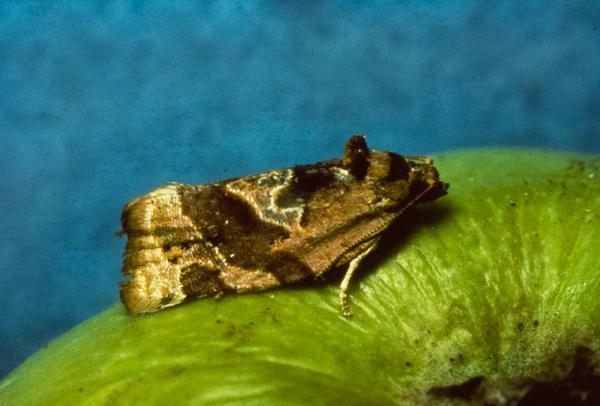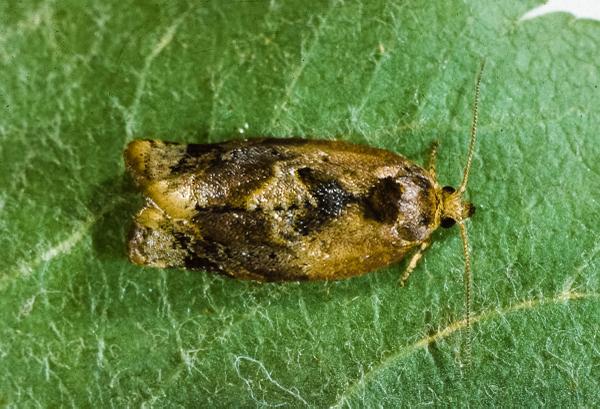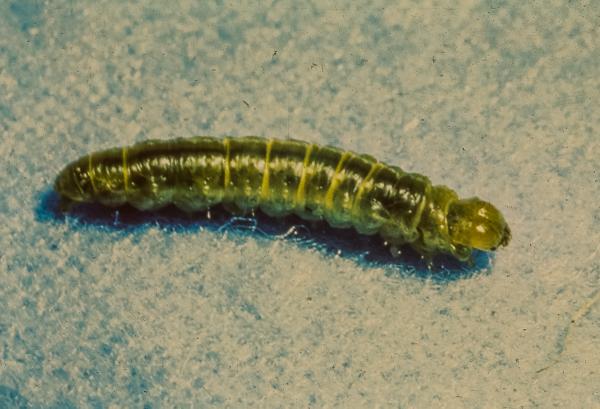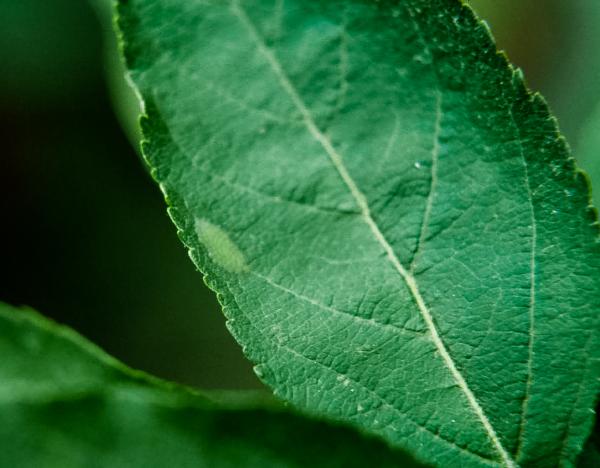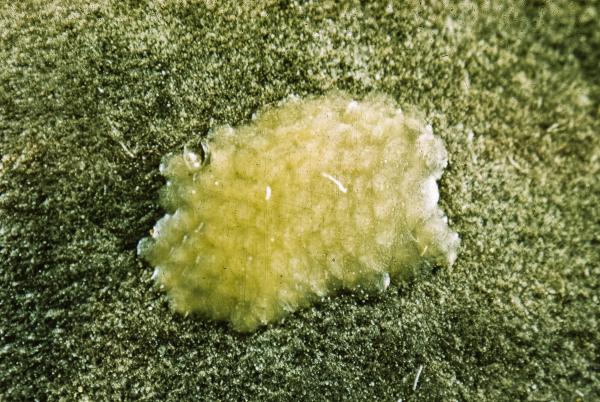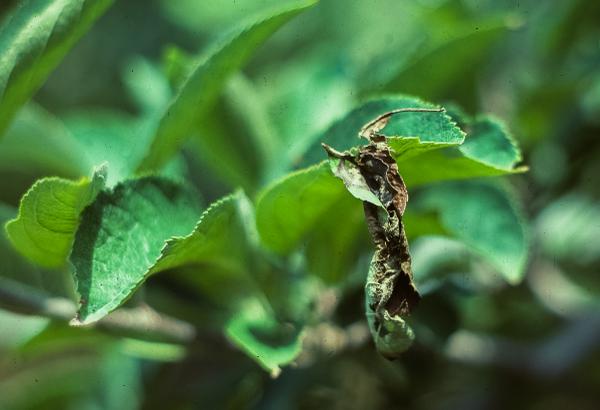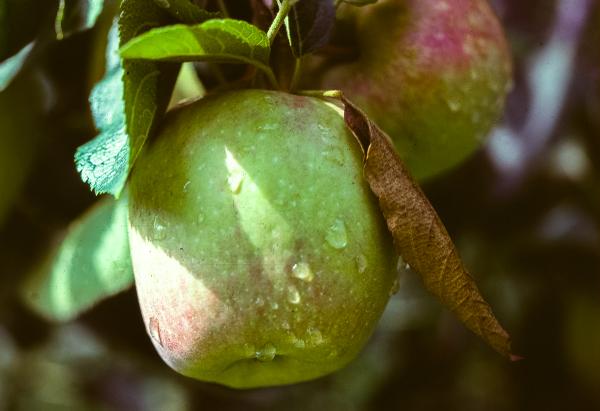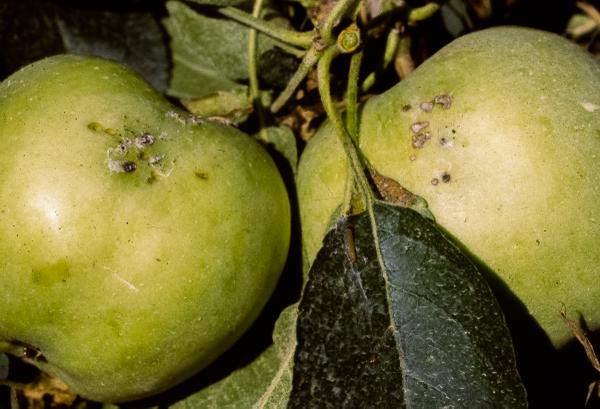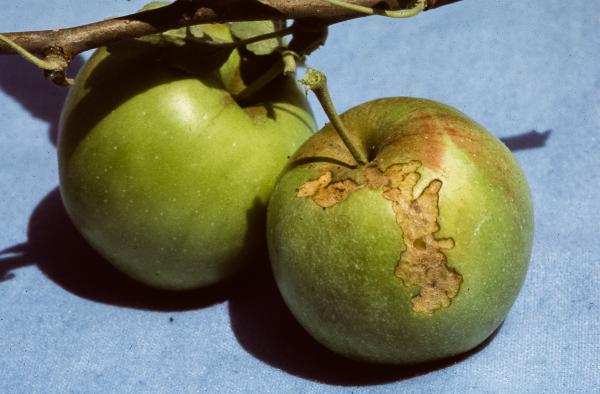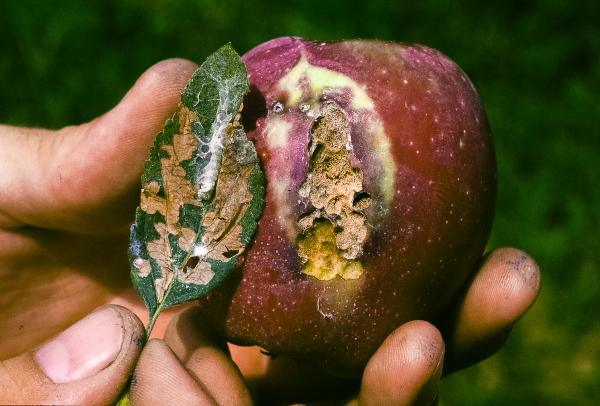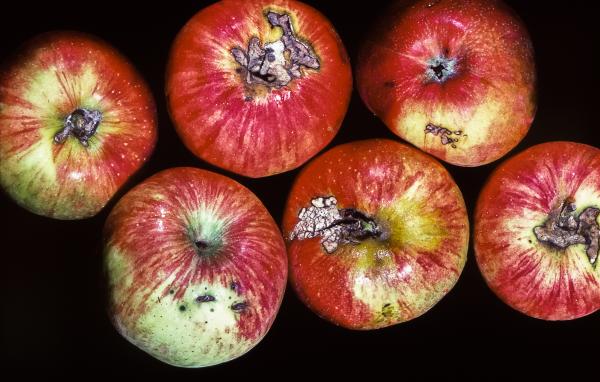Background and Description
Redbanded leafroller (Argyrotaenia velutinana; RBLR), a tortricid moth, has been reported on apple since at least the 1870s and became a significant economic pest in mid-Atlantic states in the 1940s. In North Carolina it is usually only a sporadic pest, with individuals appearing in pheromone traps but not developing into damaging populations. Larva are capable of feeding on a wide variety of plants, including deciduous fruits, forest trees, and some herbaceous plants.
Adults are tan, 1/2-inch (12.5mm) long moths with a V-shaped red-brown band running across the forewing. Pupae are greenish brown when first formed but turn a deeper brown as they age. Larvae are about 3/4-inch (19mm) long when fully developed and vary from yellow-green to grass-green. Eggs are laid in masses about 1/16 x 3/16 inch (3 x 5mm), with about 45 eggs per mass.
Life history
In North Carolina, the spring moth flight is followed by two full generations and a partial third. Pupae spend the winter on the ground in dead leaves or other debris. Adults emerge around the time of green tip stage, and the first flight peaks just before bloom. Around pink stage, first generation eggs are being laid on tree trunks and limbs. By late bloom or petal fall, eggs hatch and larva crawl up the limbs looking for food. Usually, first generation feeding occurs on tender growth on water sprouts in the center of the tree. The eggs of later generations are laid primarily on leaves. These larvae feed on foliage and will roll leaves together to form shelters by the time they reach maturity. Some will feed on fruit with a leaf attached by webbing for protection, and some feed where two fruit touch each other.
Damage
Larvae can skeletonize leaves by feeding on the underside near the midrib, folding and webbing the leaf together. Second and (more often) third generation larvae may feed on the fruit itself, often using a web or leaf to protect the feeding site. Leafroller feeding is characterized by canal-like channels in the fruit surface rather than the interior tunnel-feeding characteristic of codling moth and oriental fruit moth. Larvae may also feed inside the calyx and stem ends of fruit. Sometimes early generation larva will cause scarring on young fruit, but most damage occurs later in the year.
Monitoring and Control
Hang pheromone traps in mid-March to begin monitoring adult activity. Sprays that are applied shortly after the peak emergence are the most effective means of control, often killing not only moths but also eggs and larvae. Sprays during the late June or early July moth flight are also usually effective. Biological control is important for keeping RBLR populations at low levels.
See the "Pest and Orchard Management Program" section of the Integrated Orchard Management Guide for Commercial Apples in the Southeast for the most current control guidelines.
Publication date: Feb. 23, 2015
N.C. Cooperative Extension prohibits discrimination and harassment regardless of age, color, disability, family and marital status, gender identity, national origin, political beliefs, race, religion, sex (including pregnancy), sexual orientation and veteran status.

